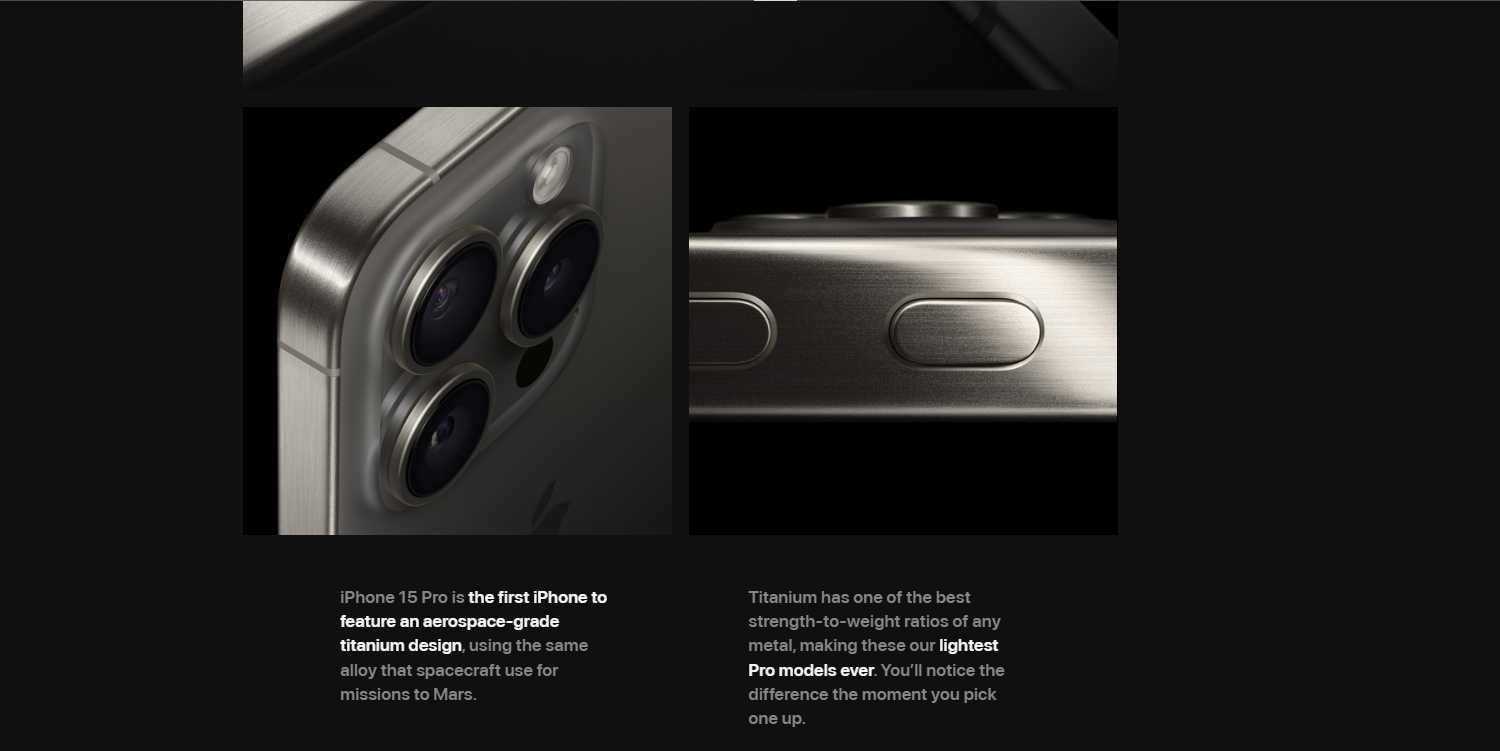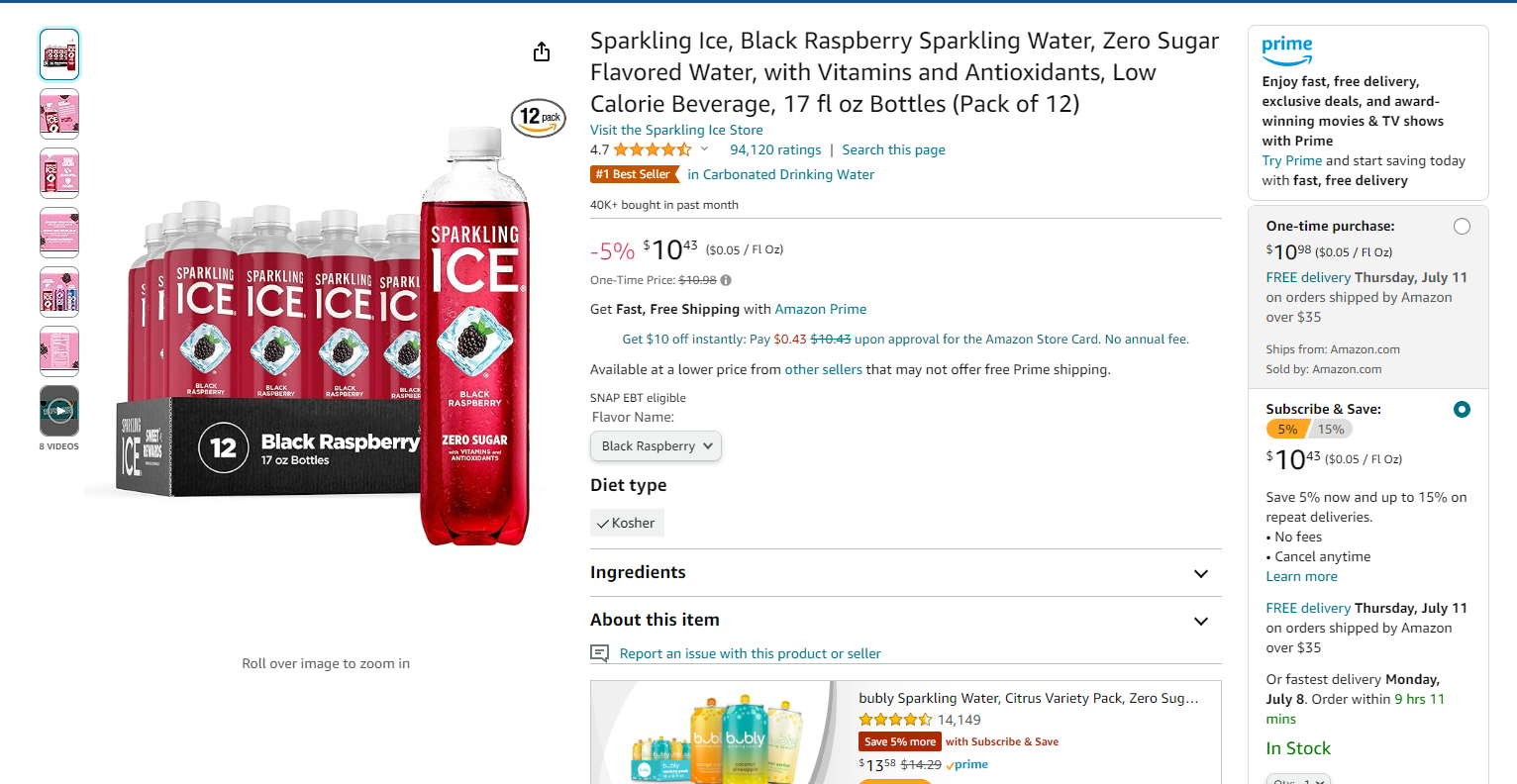Product content is the backbone of eCommerce, shaping customer experiences and driving conversions. From descriptions to specifications, it connects brands with consumers and influences purchasing decisions. This blog explores its significance, challenges, and strategies to optimize product content for better engagement, loyalty, and success in a competitive market.
Let’s dive in!
What is Product Content?
Product content is made up of vital information eCommerce platforms provide prospective customers to make informed purchasing decisions. This includes:
- Descriptions
- Images
- Videos
- Ratings
- Data sheets and other pertinent details
eCommerce businesses strategically use product information to promote and market their products online.
This brief summary focuses on the importance of product content to eCommerce businesses and its ability to:
- Educate consumers
- Sell more products
- Build brands
- Reduce product confusion
- Increase website visibility
- Boost conversion
- Improve sales outcomes for online sellers
Thus, creating product content places an emphasis on the need to produce factual and interesting information to consumers so that they can trust a brand.
There are challenges in product content creation:
- Consistency
- Adherence to timelines
- Issues of accuracy
- Appeal
- Flexibility to work on different platforms
Let’s take a look at the challenges faced in product content creation.
What Are The Key Challenges in Creating Product Content?
Some of the biggest challenges that revolve around product content management are:
- processes of consistency and accuracy across every channel
- flawed formatting
- staying relevant to current trends and technologies
A few general recommendations and best practices focus on how to avoid these difficulties:
- Defining clear communication goals and strategies
- Combining different brands into a single recognizable image
- Recognizing the target audience and its preferences
- Choosing the most suitable tools and technologies for content management
In addition, content creation looks at the relationship between the content of a product and the consumers that buy it. It highlights the significance of information about the offered products and identifies the importance of quality content in the ability of consumers to remain loyal to a particular product. Content also focuses on:
- Building brand awareness
- Highlighting useful and meaningful content
- including content created by customers

Investing in strong product content creation will help businesses thrive in eCommerce. It underscores the centrality of product content in educating, communicating with, distinguishing, and persuading consumers in the current environments of hyper-competition in eCommerce. In conclusion, strong product content for companies that are in the process of establishing themselves online is vital. In this blog post you are going to learn about product content done right, learn the right strategies behind them, which would be beneficial for any business who is interested in excelling their content marketing efforts..
What Are the Key Challenges in Creating Product Content?
The introduction above describes what product content is and why product content matters in the process of educating consumers and encouraging them to buy a product. This section below highlights how essential it is as a solution that elevates the connection between product content and consumer purchasing. The post then expands to other instances that struck the need for proper product content as follows:
The first is by Apple, where beauty and narrative perfectly combine. Apple’s strategy relies on the vast use of hi-resolution visuals, informative but user-oriented data, and good old dashes of emotions in the commercials.

Credits : https://www.apple.com/
Likewise, Patagonia’s reputation is based not only on outstanding quality and functionality of its products, but also the company’s emphasis on honesty, sustainability, and sharing information about materials and processes.
Glossier effectively uses consumer data to encourage user participation as well as to create an atmosphere that encourages consumers to share their experiences and thoughts. Amazon is extremely efficient with delivering relevant product details in addition to allowing customers to read reviews from other consumers before making a purchase.

Source: https://www.amazon.com/
Nike’s main attention-grabbing strategy is emotional and engaging stories. It concentrates on arousing feelings of hope and desire to overcome hardships through images of athletes who struggled and achieved greatness.
The blog post then provides more examples of major brands and their product content strategizing in which brands such as Tesla, IKEA, and Warby Parker are the subjects of the discussion. While Tesla is known for its focus on innovation and sustainability, IKEA is highlighted as a company that offers practical ideas and inspiration regarding home furnishing. Warby Parker is considered to be all about shopping for eyeglasses online without complications.
Airbnb offers an online platform and an app for Experiences in unique places globally. Sephora offers a variety of information and motivation for beauty consumers.

Product content for Coca-Cola focuses on story-telling and emotional appeal while GoPro highlights extreme sports and adventurous moments. Spotify is created to offer suggestions and tailor-made music playlists based on customer taste
LEGO activates playful imagination, Starbucks triggers the desire to become part of a group of people who rewards themselves and earn rewards for being a member. Fitbit helps users to attain their fitness goals. A similar approach can be seen in such companies as Peloton, which provides high-quality exercise bicycles and engaging workout videos and classes; Lululemon, with its intense concentration on performance and fashion; and Airbnb, providing individual homes and experiences worldwide.

Looking at these examples, we learn that targeting specific groups in a creative manner is effective and should be practiced to trigger positive emotions among the target consumers. In conclusion, one can appreciate and learn a lot from the blog post, which provides a detailed analysis of examples of product content done right. It will help businesses to learn from great examples and work towards differentiating themselves in the competitive world of content marketing today.
How Does Product Content Enhance Customer Experience?
Product content, being one of the core components in influencing the entire buyer experience, plays a crucial role in a buyer-seller relationship. Currently, buyers are presented with an almost endless pool of choices and thus expect to spend their money on the best possible product. This blog post aims to explain what product content is and how it can contribute to the improving of the Customer Experience Journey. Product content can include:
- detailed description
- comprehensive specification
- insightful features explanations
- The CAGs also encourage clarity and transparency
Visuals, graphics, and animated videos provide a mental imagery and more than just the feeling of touching and using the product, the consumers are emotionally connected to the product. Personalized offerings increase customer interest and strengthen interactions between brand vendors and customers.
SEO (Search Engine Optimization) helps product content to appear easily on the internet searches, so customers can easily and quickly find products, thus leaving them satisfied. Benefits of customer reviews/ratings and testimonials include customer opinions about a purchased product from so new customers know what to expect. This helps to create trust and a community among the consumers. Through offering extra support materials, it guarantees that customers will gain value from their purchases and makes the brand loyal in delivering services to the customers.
The ‘Product Content Definition’ is a detailed analysis of all the parts that define and explain the components, role, and strategies involved in explaining product content for competitive advantage in the e-commerce sector. It first defines the notion of the product content, stressing that it is an element that speaks for the product and convinces the consumer about the need to purchase a certain item. Then the guide goes on to describe what product content is made up of and why each of the parts are necessary, in addition to providing tips for what companies and organizations should do to maximize the effectiveness of product content.

What Are the Main Components of Product Content?
- PDPs (Product Detail Pages) are defined as a basic element that comprises the short and long description. Shorter descriptions explain the main advantages of the product and its basic features whereas longer descriptions are detailed and suitable for complex products. The key points to take from the guide include: The use of appealing language, the proper explanation of how the product will help the user rather than what it technically does, and the proper use of formatting.
- File format and animation can be required since textual information is not enough. High-quality images are regarded as essential for the representation of products. Standard images, lifestyle images, multiple imagery, and zoom facilities are defined, and guidelines on conducting professional photography, image standardization, and web application are also provided.
- Videos are enclosed as extraordinary forms of content that make the shopping experience more unique and convenient. Providing demonstrations, unboxing, helpful guidelines, and stories of promotions help the customer connect to the brand and product. Some other features, which needed to be adopted are the length and quality of videos, and whether the content is pertinent and informative or not. Certain features are found to be especially helpful for the establishment of a basis for social validation and trust including: DOI, credibility boosting, constructive feedback for change, and shifting of purchasing behaviors.
- User manuals and guides that explain assembly, installation, or special use, are crucial as part of the best practices. They need to be straightforward, concise, and follow a step-by-step approach to language..
- FAQs put a handle on the usual questions and concerns that customers may have. They help make it easier for the customers to understand what they are buying and what they are likely to experience so that there are no hitches that would discourage them from making a purchase. It also suggested that answers should be short and to the point; updates should be given based on feedback; and the FAQ page should be well-structured and easy to navigate.
- Marketing copy is considered as a persuasive text used for drawing in potential consumers and leading them to purchase your product. Some guidelines for quality copywriting are: clarity and conciseness of language, persuasive call to action, focusing on the benefits of the product and on creating the illusion that the product has a low supply, so “buy now”.
- Metadata is considered important for improving SERP rank where suggestions include optimizing keywords, integrating rich media and structured data to make content more distinctive, versatile, and rich.
In a world of escalating consumer environmental awareness, sustainability information is cited as gaining importance. Guidelines are suggested for offering transparency, organizational environmental commitment, and skilled identification.
The process of setting up products for better customer engagement is explored further in the context of personalized shopping. Examples include tools like quizzes, configurators, and virtual try-ons. The focus is on creating easy-to-use configurators, gathering and analyzing customer data, and finding ways to continuously improve their effectiveness.

What Impact Does Well-Defined Product Content Have?
The guide goes on to describe the roles of well-defined product content, showing how such rich content improves customer satisfaction, SEO optimization, conversion rates, reduction of return rates, and product credibility. Core factors build on and make each other better, thus improving business outcomes. Lastly, the guide shifts to the future of product content exploring the new trends like augmented reality, artificial intelligence, the interactivity of content, chatbots, and data-analytical insights. These trends of enriching experience, sustaining engagement, and preparing for the future business world are discussed, highlighting the fact that it can only get harder to stay one step ahead of the game in the coming days.
Neat and brief information gives the key knowledge about a product to be sold. Sometimes product information doesn’t focus on what the customer wants to know. Instead it focuses on the product’s benefits, specifics and serial number. Customers are satisfied when they can look and see the information that matters most to them, such as: cost, color, size, dimensions, and warranty. By outlining the features, specifications, dimensions and how to use the products, firms satisfy the customer and keep away the possibilities of dissatisfied consumers and returns.
Holding the potential clients’ attention and offering simple and clear information on products offers is the primary aim of creating credibility. Thus, proving to the client that you identify with their needs. This being the case, a detailed, precise, and comprehensive product description assists the consumer to locate the information they are looking for quickly, pushing them closer to buying. This motion can assist the customer in understanding the need to buy your product or shift their preference towards your product.

Why Are Product Descriptions Crucial?
While introducing the subject of product content, it is impossible to leave out such a critical aspect as the description of product attributes. It is this information that customers will find most helpful about the product. In other words, being either encouraged or discouraged by your product description is all that separates you from making or losing sales online. There is a lot of power in catchy, compelling product descriptions, the type that actually pave the way for the sale of products. This has been eliminated through the eCommerce store, making it impossible for the customers to have the real feel over handling your products. Consequently, customers will be left with only descriptions about your product and therefore they must be able to do that through visualization.
How Does Duplicate Content Negatively Impact Google Rankings?
The creation of unique and up-to-date product content will make a positive impact on your rankings and ratings. Low rankings implies low customer awareness and thus, the customer will not be able to find or get access to your product information to be able to purchase from you. High rankings are earned by impressive, diverse and engaging product descriptions, high-quality pictures, and clear navigation. Avoid the danger of just listing the features which are to be found in the product. Also ensure that you also clearly state advantages of how each one is a perfect solution that solves a particular problem in the life of your consumers.
The addition of visuals to your product descriptions can speak volumes. The integration of such value-added graphical elements as statutory images, videos, and drawings will be far more effective than mere wording can be in increasing sales revenue. The trick isn’t to write long and lengthy descriptions, but to adapt the mantra: Long word descriptions should be avoided where quick descriptions can be made instead use arrows to highlight unique selling points of your products.
In fact, there are few things that cannot be made engaging to consumers through an impressive description, no matter how mundane they may seem. You can engage the services of professional copywriters who can make descriptions compelling for your brand’s content marketing content. It is very important to get proper editing and proofreading of your product description to avoid looking like a novice and it creates a good impression on your customers. When your PDs can duplicate the customers’ interaction with the human sales assistants, you can state that you, as the brand, have done your part. Offline stores rely on oral presentation whereas online stores are dependent on written words. So, you will have to make words work to your advantage.
How Does Product Content Influence Consumer Purchases?
It is often quite challenging for organizations to attract attention as competition is getting stiffer with each passing day. The key to doing this effectively is to present content that will capture the attention, particularly for today’s social selling landscape.
A site with good design, but without detailed product information, is one that does not help cement the relationship that customers have with the brand. They are able to come in, read excellent content, discover and proceed to click because effective content is impactful. People should look forward to the kind of experience you make them have with your brand.
How Can Product Content Build Customer Loyalty?
Buyers are attracted to certain brands and use the brand’s website to purchase products. But that doesn’t mean they will stick with them forever. Some of you may argue that capturing the customers initially may be easier than retaining them. But in the digital world this is not entirely accurate. Value needs to be added to the customer needs solutions. This holds true for brands that wish to up the notch on consumer relations. By incorporating your content, you pass on the information regarding a specific area of specialization and eventually create a level of trust between your customers and yourself.
This results in a sense of loyalty over a period of time that can translate into repeated purchases. Customer loyalty is still to be treated as one of the primary strategic focuses in the companies, with the focus laid down on delivering the right digital experiences that are unique. When they get a chance to really outdo customer expectations and make them happier, customers will become your greatest promoters. These brands aim at achieving customer loyalty as their ultimate goal and therefore, their brands are closer to the pinnacle of competitive advantage.
This is another piece of evidence that reveals that acquiring a new customer is as much as six to seven times more expensive than retaining an old one. Thus, the mission should involve extending a given customer base while simultaneously nurturing lifelong consumers and searching for more potential targets.
What Is the Reach and Influence of Quality Product Content?
Business competition is a tough battle that many want to win these days. Thus attracting customer attention is more challenging than ever. This can best be done through creating captivating content by using dynamic selling tools available in today’s world. Hence a site that has great graphics and design but lacks rich product content is one that doesn’t continue creating this link between the customer and the brand.
With good content, businesses are able to attract the attention of the customers and engage them in reading further, finding out and clicking more. People should look forward to the interaction with the brand that you create. SMEs of today failed to invest in their content because they are NOT aware of the gains that they are set to reap. This way, close-knit content makes small startups attempt to compete not only with famous brands but also succeed in the World Wide Web site. It would be interesting to know how they overcome the challenges they may have faced in the time before digitization.
Reach of content has no limits
With the fact that they understand there is an increase from all angles, big firms are wagering on content marketing to a much greater degree than they ever did before. Indeed, Peters emphasizes that content has a function of introducing and implanting a product in the minds of the potential consumers, thereby creating leads for a company. Providing quality content on the website will help make the site popular and contribute to increased sales.
Creating quality content that educates your clients on topics relevant within the industry, will portray your competence to the buyers and create trust. In this context, it’s possible to continuously deliver content to your customers that will keep them engaged and interested thus contributing to building loyalty to your brand. Of course, this investment may mean their time, effort, and/or money which they put into pursuing a particular course of action with a certain outcome in mind.
How Can Brands Unlock the Potential of Strong Product Descriptions?
This is among the reasons why you will find some articles having descriptions using one sentence or even no sentences. That is, how do you influence your customers that you are the best solution they have out there? As you sell the benefits of your product, you should ensure that the descriptions given are effective and persuasive for the target consumers.
Website content should be readable and written in a format that the customer appreciates and understands. They also need to convey product attributes and other important information that may be vital in the sale of a particular product. The basic idea here is that if customers perform a cursory glance, they should comprehend all that has been said. The fact is, product content is not as simple as it seems when one has to write product descriptions that grab the buyers’ attention.
You must ensure that the customers are provided with all the necessary details to make the sale. Products should be advertised as able to improve lives and the decision to buy them will be a positive one. This will assist you in establishing a brand that will not only be immune to the challenges faced by other brands but also able to beat them. When you produce content and share it, always ensure that you are evaluating your content and eliminate the ones which do not do so well.
Got customers? The challenge comes when searching for specific customers to target within your market. What you’ll find is that when you take the time to define their target customer, you can meet the challenge of producing content that will be interesting to fit into this demographic. Do this by focusing on the aspects that are critical t o producing engaging content.
Why Is Consistency Key to Effective Product Content?
Lastly, you have no reason not to create highly-targeted and individualized content. It also must be interesting to the clients for them to be compelled to look at it or read it in detail. Indeed, as the old saying goes, an engaged shopper is a happy customer; at least when it comes to shopping, that is probably the wisest advice that could be given.
Key Takeaways About Product Content
This blog includes and discusses the theoretical and practical issues related to the definition of product content and comprises the description of its fundamental constituents, significance, recommendations, relevance, and prospective developments. Therefore, by adopting the concerned strategies and perceiving the eco-system advancement perspectives, businesses can interweave product content for the purpose of augmenting customer orientation, sales generation and brand loyalty formation in the digital landscape.
FAQs About Product Content
1. What is product content?
Product content refers to all the details users submit about a specific product, including descriptions, image or video, reviews, and guidelines. Arguably, one of the advantages of having information about a specific business and industry is the ability to help customers in making the right purchasing decisions.
2. Why is product content important?
Product content is essential because it creates buyer trust, improves key phrase relevancy, increases certification rate by offering detailed information.
3. How can I create effective product content?
There are five main guidelines for creating great product content:
- define your target audience
- focus on the benefits
- be truthful
- use better images
- Respect SEO
4. What are common mistakes to avoid in product content?
The most usual mistakes that are made include overemphasis on the information not needed by customers, not making the site mobile device-friendly, and the use of low-quality photos. The focus should be on ensuring that the posts are short, readable, easily portable and attractive to the eyes.
5. What are some future trends in product content?
Central trends are the increased use of interactive content such as AR, the focus on more individualized content for the products, and transparency on sustainability. They can improve the climate for customers and cater to their changing needs and expectations.
Optimize your product listing at scale
Our AI Content Writer saves you precious time by generating customized content in a fraction of the time it would take manually.
Start for Free


